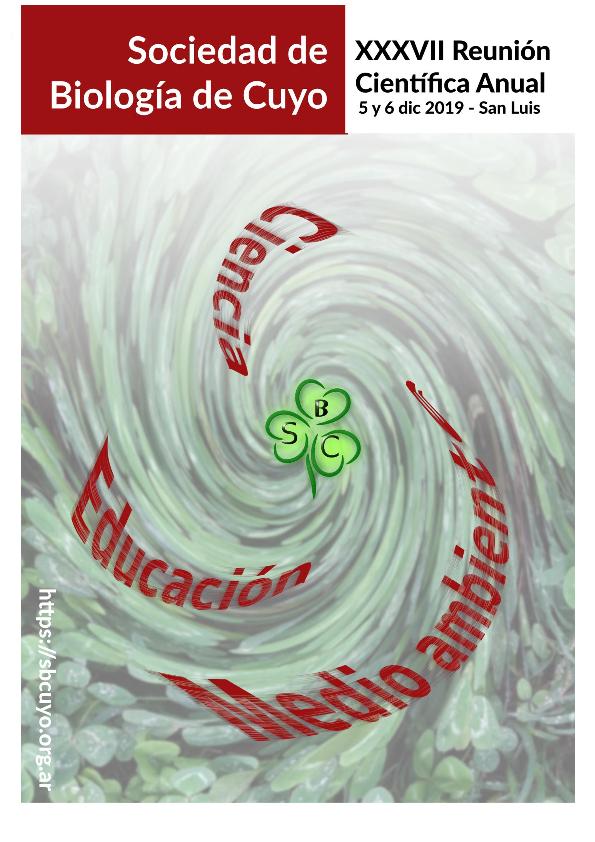Evento
Effect of the joint administration of ketamine and fluoxetine in positive calbindine interneurons of the basilateral nucleus of amígdala in ratus novergicus: preliminary results
Guevara, M. A.; Vaquero, A.; Fernandez Diez, Marina; Márquez Herrero, S.; García Menéndez, Sebastián Marcelo Manuel ; Romanowic, E.; Barrutieta, I.; Bengoetxea Odriozola, H.; Ortuzar Markes, N.; Baiardi, G.; Lafuente Sanchez, J. V.; Gargiulo, Pascual Angel
; Romanowic, E.; Barrutieta, I.; Bengoetxea Odriozola, H.; Ortuzar Markes, N.; Baiardi, G.; Lafuente Sanchez, J. V.; Gargiulo, Pascual Angel
 ; Romanowic, E.; Barrutieta, I.; Bengoetxea Odriozola, H.; Ortuzar Markes, N.; Baiardi, G.; Lafuente Sanchez, J. V.; Gargiulo, Pascual Angel
; Romanowic, E.; Barrutieta, I.; Bengoetxea Odriozola, H.; Ortuzar Markes, N.; Baiardi, G.; Lafuente Sanchez, J. V.; Gargiulo, Pascual Angel
Tipo del evento:
Reunión
Nombre del evento:
XXXVII Reunión Científica Anual de la Sociedad de Biología de Cuyo
Fecha del evento:
05/12/2019
Institución Organizadora:
Sociedad de Biología de Cuyo;
Título del Libro:
Libro de Resúmenes XXXVII Reunión Científica Anual Sociedad de Biología de Cuyo
Editorial:
Sociedad de Biología de Cuyo
Idioma:
Inglés
Clasificación temática:
Resumen
There are different pharmacological treatments for depression, limited in their effectiveness and many have very long latency periods. Current research points to NMDA antagonists as possible therapeutic targets of this disorder. The objective of this work was to assess at a behavioral level the synergistic interactions between the antidepressant of the SSRIs group fluoxetine, and ketamine, a noncompetitive NMDA receptor antagonist and correlate the findings with structural changes in the basolateral nucleus of the tonsil with respect to positive calbindin Interneurons. Holtzman rats that were treated with fluoxetine were used. 10, 15 and 20 mg / kg and ketamine. 2.5, 5 and 10 mg / kg and subsequently were evaluated in the forced swim test each group consisted of n = 20. Fluoxetine in doses of 10 and 15 mg / kg and ketamine in doses of 2.5 and 5 mg / kg did not produce a significant decrease in immobility time, On the contrary, if significant decreases were observed with fluoxetine 20 mg / kg (p <0.01) and ketamine 10 mg / kg (p <0.05). Likewise, there was a significant decrease in immobility time when fluoxetine 10 mg / kg + ketamine 2.5 mg / kg (p <0.01) and fluoxetine 15 mg / kg + ketamine 5 mg / kg (p <0,0001). At 24 hours after the test, positive calbindin interneurons of the basolateral nucleus of the tonsil were analyzed by immunohistochemistry. Each group consisted of an n = 3. It was observed that the saline group presented significant differences with the group treated with 20 mg / kg of fluoxetine (p = 0.001), with the group treated with 5 mg / kg of fluoxetine (p = 0.0001) and with the group treated with 5 mg / kg of fluoxetine + 2.5 mg / kg of ketamine (p = 0.0001), the latter being the one with the least positive calbindin interneurons. Ketamine groups have not yet been analyzed. These results indicate that co-administration of fluoxetine and ketamine can induce a more potent antidepressant activity than when used alone. In addition, the decrease in the density of cositive calbindin interneurons in the basolateral nucleus of the amygdala could be directly related to the action of drugs on these neuronal populations, thereby increasing neuronal plasticity and being able to restore excitatory and inhibitory balance.
Archivos asociados
Licencia
Identificadores
Colecciones
Eventos(CCT - MENDOZA)
Eventos de CTRO.CIENTIFICO TECNOL.CONICET - MENDOZA
Eventos de CTRO.CIENTIFICO TECNOL.CONICET - MENDOZA
Citación
Effect of the joint administration of ketamine and fluoxetine in positive calbindine interneurons of the basilateral nucleus of amígdala in ratus novergicus: preliminary results; XXXVII Reunión Científica Anual de la Sociedad de Biología de Cuyo; San Luis; Argentina; 2019; 45-45
Compartir



